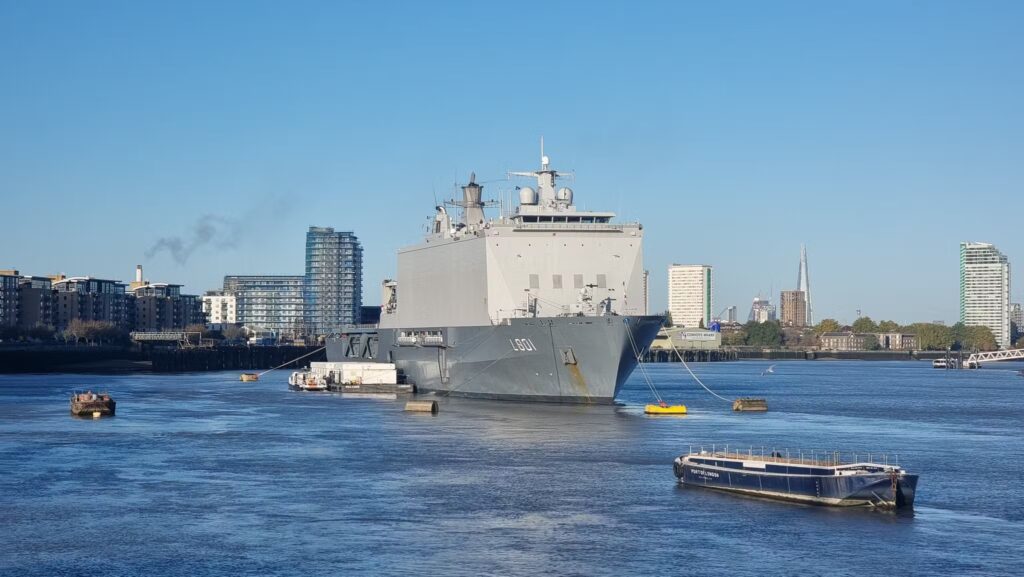Aboard the Dutch assault ship HNLMS Johan de Witt in London, journalists got a better have a look at how NATO’s multinational process teams operate in follow.
Commander Craig Raeburn of the Royal Navy, Chief of Employees for Standing NATO Maritime Group 1 (SNMG1), spoke to me concerning the day by day work of turning broad technique into coordinated motion amongst ships and crews from throughout Europe.
“I’m the deputy for the Commodore, who’s a one-star Dutch officer,” Raeburn stated. “My function is mainly to take the Commodore’s strategic concepts and put them into follow. He does the ‘what I need to do,’ and I do the ‘execute.’ I additionally act as his deputy when he’s not right here.”
Managing a rotating headquarters group of round twenty officers, he has labored with colleagues from nearly each main NATO navy. “I management a employees of 20, primarily Dutch officers and about 5 worldwide officers, which embody Portuguese, Spanish and German. I’ve had Polish officers up to now, and I’ve had Swedish and Finnish officers engaged on the employees.”
Coordination throughout such a various combine, he stated, relies upon much less on luck than on a long time of standardisation. NATO ships share related communications and command methods that enable them to function collectively with out friction. “It’s really fairly simple. We use frequent methods, not essentially frequent weapons or frequent platforms, however our communications and command and management methods are very related.”
One of many key instruments behind that coordination is the Hyperlink community, which lets ships share monitoring and focusing on info in actual time. “We use methods referred to as Hyperlink which move on info of targets and monitoring info which will be simply shared with every nation, and our communication system operates inside NATO secret boundaries, so we are able to talk freely with one another, both over voice or over digital networks and satellite tv for pc networks.”
Language, extra broadly, isn’t a barrier in any respect. “My Spanish officers, my Polish officers, every part else, their powers of English are excellent. Primarily as a result of, for instance, in aviation, within the maritime it’s the principle language. It’s, if you happen to like, the lingua franca for maritime operations. So all of them include that. That barrier is well damaged down.”
Years of multinational work have additionally helped him navigate cultural nuances. “Cultural limitations is usually a little bit extra of a problem,” he admitted. “However I’ve in all probability labored half my naval profession in worldwide environments. I’ve labored in South Korea, I’ve labored in Yugoslavia, I’ve labored in Canada. I taught on the Canadian Warfare College for 3 years and the Dutch Warfare College for 2. I perceive the sensibilities, and it’s only a case of discovering a standard floor and an space the place we are able to work collectively.”
That accrued expertise, he stated, defines NATO’s standing maritime forces. “It reveals that we’ve that functionality, and it’s the message that we’re strongly collectively. We will work collectively, and we are able to function collectively. That’s an actual problem for a single state that desires to place up a menace.”
He closed on some extent that summed up all the philosophy behind the naval energy the Alliance has at its disposal.
“Collectively as NATO, we’re significantly stronger than another nation on the planet, particularly once we convey the US to bear in that drive. It’s that case of being stronger collectively.”

